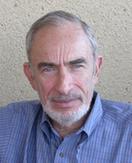|
|||
|
|||
|
|||
Paul R. Ehrlich is the Bing Professor of Population Studies and the president of the Center for Conservation Biology at Stanford University. Among his more than 40 books are The Population Bomb and Human Natures: Genes, Cultures, and the Human Prospect. He is one of three authors of The Annihilation of Nature, along with Gerardo Ceballos, one of the world's leading ecologists and a professor at the Institute of Ecology at National Autonomous University of Mexico (UNAM), and Anne H. Ehrlich, a senior research scientist emeritus at Stanford University. Anne Ehrlich is the coauthor of Extinction: The Causes and Consequences of the Disappearance of Species and The Dominant Animal: Human Evolution and the Environment. Ceballos is the author of Mammals of Mexico and Diversity of Mexican Fauna.
What is meant in your subtitle by the phrase "human extinction"?
There's not the slightest question in anybody's mind of why we're facing an extinction crisis, both of populations and of species, and that's human activities. It's not extinction of humans, it's humans forcing birds and mammals to extinction.
How does the three-author cooperative process work?
First of all, Gerardo's first language is Spanish, mine is bad English and Anne's is excellent English. Usually Gerardo, or I, or Anne will sketch out a chapter, depending on where our expertise lies. I will edit it the first time around and ask Gerardo to explain some things--his English is excellent, by the way; no one has any trouble understanding him or understanding what he writes--but it's not colloquial enough in places. Then Anne goes through and replaces all my split infinitives and stuff like that. It's really an ongoing process. Gerardo is more in charge of the photographs in this particular book--he's a wonderful photographer on his own, he's published many books of photographs. We all have students and others who've helped us. None of us publishes anything in areas that are even slightly controversial without having a lot of colleagues go over it, and of course we had that done for this book, too.
The cooperative writing process is three equal parts. The effort is equal, but we all have somewhat different talents and do somewhat different things.
 Who is your target audience for this book?
Who is your target audience for this book?
Our target audience is intelligent people who read books. It's not highly technical, but it's not dumbed down in any way. We hope to make it both an attractive book and one that's good reading. The whole idea is to introduce people to what we're losing. The average person on Wall Street has never seen a natural ecosystem or, say, the animals on the plains of Africa, and can't really picture what's going on. We hope to get people to picture what we're losing and get them to do something about it.
What does "climate disruption" mean, and why use that phrase rather than the more familiar "climate change"?
We adopted that phrase from the one used by Obama's science adviser John Holdren, who's a close friend of ours. He pointed out that it isn't just warming--that we are changing the entire climate. Things like the frequency of hideous storms are going to increase, and not every place may get warmer: some places may get cooler. "Disruption" is more accurate than "global warming," and even "climate change" doesn't carry the implication of speed. We know the climate has always changed, and most people, certainly the people who will read this book, would know that there were ice ages and things like that. So one of the big issues that's highlighted by using "climate disruption" is that the change is rapid. Getting older does not disrupt your life, but if you get married or divorced, that's disruptive. That's the main reason for using "disruption."
 Presumably many endangered species of birds and mammals didn't fit into this book. How did you choose which species to discuss?
Presumably many endangered species of birds and mammals didn't fit into this book. How did you choose which species to discuss?
We chose the ones, first of all, that we know best. One of the problems, covered by a paper I was just involved in that got a lot of publicity, is trying to figure out whether or not we can prove beyond a shadow of a doubt that we're experiencing a mass extinction. One issue is that there are not enough biologists to track all the species we think may be endangered or, in fact, gone. For this book we wanted a good variety of birds and mammals--the organisms most people relate to and certainly the ones we know most about in these terms. For instance, I've spent a lot of my life working with butterflies, but there are very few butterfly populations where we know enough about what's happening to say anything statistical about the rate of extinction. But birds and mammals we know. We know which ones we know interesting stories about, and there are a wide variety of them in a wide variety of circumstances. So this isn't an attempt to analyze what's happening to all birds and mammals, but rather to take a bunch of interesting examples and tie them into why it really counts.
 What about animal species beyond birds and mammals, and extending into plants--what is the scope of mass extinction relative to the story told in your book?
What about animal species beyond birds and mammals, and extending into plants--what is the scope of mass extinction relative to the story told in your book?
The scope of the mass extinction is vast, but population extinctions are the absolutely critical thing. There are a whole series of reasons not to wipe out the only other living things we know about in the universe: one, of course, is just that they're interesting, fascinating and beautiful, but many people would consider it more important that they're working parts of our life-support systems. The importance of population extinctions is easily illustrated. If we could somehow miraculously preserve one population of every species on the planet, just one, permanently, we would lose no species diversity--but we'd all be dead in a few weeks, because we utterly depend on having lots of populations to provide us with what are called ecosystem or natural services. For example, honeybees are involved in producing something like $18 billion of agricultural produce in the United States--critical to giving us a much more varied and nutritious diet. If they all died out, we'd be in deep trouble, even though they could persist in, say, Italy and Africa and we would not have lost a species, but we would have lost a vast number of populations. And population extinctions necessarily go on at a much higher rate than species extinctions, because no species goes extinct until every one of its populations has been driven to extinction.
The stories that we tell in this book make up maybe 5% of the relatively well-known stories of species extinctions. But there are many more: for instance, we didn't look at most of the so-called threatened species, the ones that the International Union of Conservation of Nature considers to be in great danger but they're not sure exactly how much. In other words, we've taken the ones where we know a lot about the endangerment, we know a lot about the distribution, and where they have really interesting stories. If you look at mouse lemurs in Madagascar, we've discovered that there are many more different ones than people thought 25 years ago. I think it went from something like two species to 12. That also means that it added substantial endangerment. If there were only two species, the chances of losing either one were relatively small. When we discover there are really 12, all of a sudden there's more endangerment. But the danger there is the same as the danger everywhere--destruction of habitat is the main thing--so it wouldn't be interesting to tell the stories of 12 mouse lemurs. We felt it was better to find the most interesting stories to tell. --Julia Jenkins
Photographs from The Annihilation of Nature: Human Extinction of Birds and Mammals by Gerardo Ceballos, Anne H. Ehrlich and Paul R. Ehrlich, Johns Hopkins University Press, 2015.
Author photos: Gerardo Ceballos courtesy Instituto de Ecología, UNAM; Anne Ehrlich by Anne Hammersky; Paul Ehrlich courtesy of the author.




